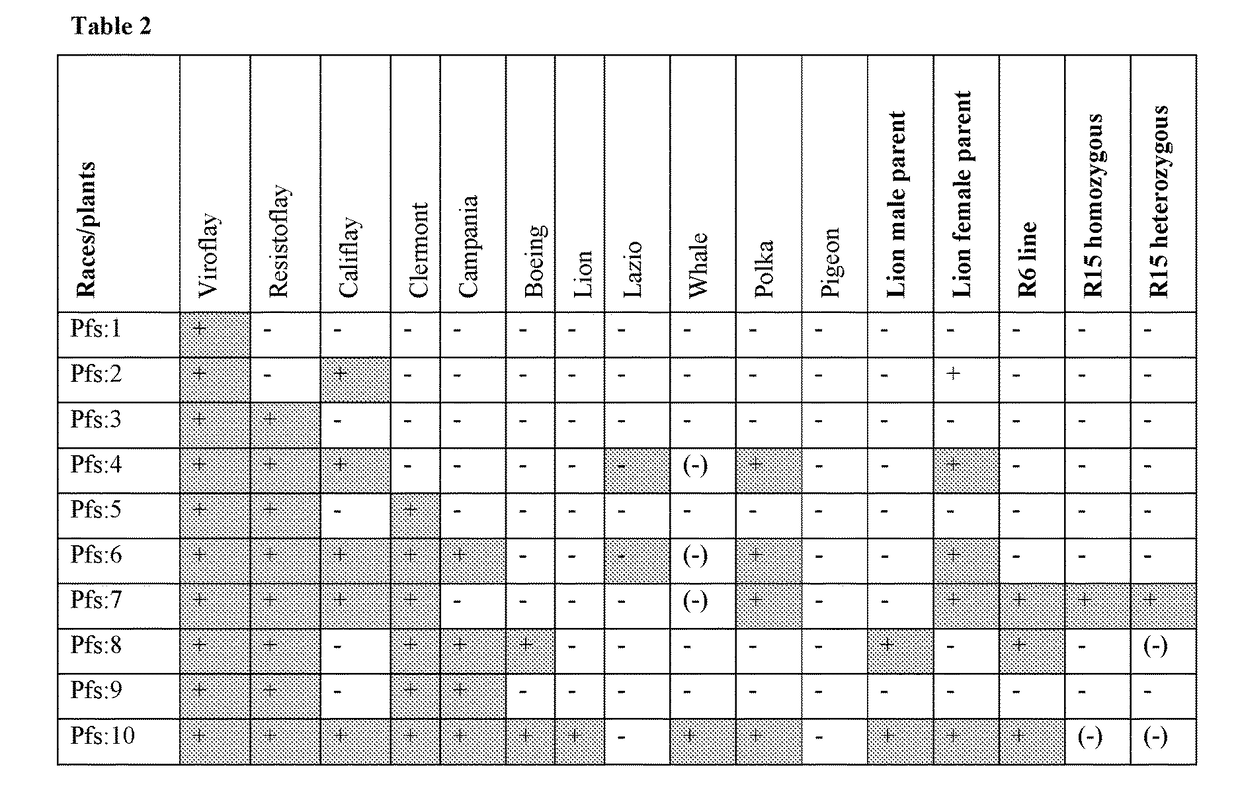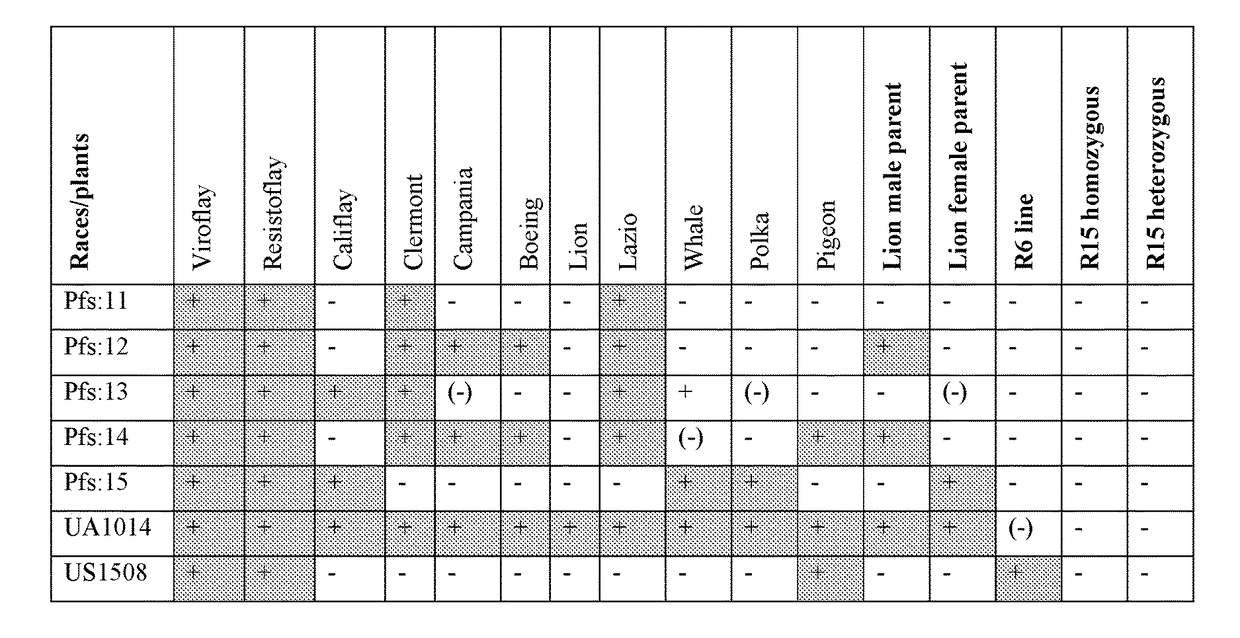Peronospora resistance in spinacia oleracea
a technology of peronospora and spinacia oleracea, which is applied in the field of spinach plants, can solve the problems of great damage to the worldwide spinach industry in the immediate future, and achieve the effect of broad resistance pattern and easy transfer
- Summary
- Abstract
- Description
- Claims
- Application Information
AI Technical Summary
Benefits of technology
Problems solved by technology
Method used
Image
Examples
example 1
Testing for the R15 Resistance Trait in Spinach Plants
[0137]The resistance to downy mildew infection was assayed as described by Irish et al. (2008; Phytopathol. 98: 894-900; seedling test described on pages 895-896), using the differential set shown in Table 2. Spinach plants of the invention carrying the R15 allele homozygously and heterozygously, together with positive and negative control plants, were planted in trays containing Scotts Red-Earth medium, and fertilized twice a week after seedling emergence with Osmocote Peter's (13-13-13) fertilizer (Scotts). Plants were inoculated at the first true leaf stage with a sporangial suspension (2.5×105 / ml) with one of the pathogenic races of Peronospora farinosa f. sp. spinaciae to be tested. For each of the four accessions 30 plants per race were tested.
[0138]The inoculated plants were placed in a dew chamber at 18° C. with 100% relative humidity for a 24 h period, and then moved to a growth chamber at 18° C. with a 12 h photoperiod ...
example 2
[0146]Introduction of the R15 Resistance Trait into other Spinach Plants
[0147]A plant of the invention was crossed with a plant that did not contain the R15 resistance trait, to obtain an F1. Thirty plants of the F1 population were tested for resistance to Peronospora race UA1014, as described in example 1. This particular resistance was absent from the plant not containing the R15 trait used in the said cross. All 30 plants showed the resistance pattern of the invention, i.e. resistance to pathogenic race UA1014. This demonstrated that the inheritance of R15 resistance allele in relation to UA1014 is comparable to a dominant pattern of inheritance.
[0148]In another experiment, a plant of the invention was crossed with a different spinach plant that did not contain the R15 resistance trait of the invention. Plants of the F1 population were selfed, and a total of 112 plants of the F2 generation were tested for Peronospora resistance, as described in example 1. As a positive discrimina...
example 3
[0153]Introduction of the R15 Resistance Allele into an Elite Parent Line of Hybrid Variety Lion
[0154]The R15 allele was introduced in an agronomically elite parent line and corresponding hybrid by backcrossing according to the following steps:[0155]a) A plant homozygous for the R15 allele was crossed as father with a plant of the mother line of Lion. Table 2 shows that the mother line of hybrid variety Lion is susceptible for Pfs:7.[0156]b) Subsequently, a plant of the F1 was crossed with a plant of the mother line of Lion to produce BC1 seed.[0157]c) BC1 seed was grown into BC1F1 plants these plants were tested for resistance to UA1014 as described in example 1.[0158]d) A BC1F1 plant was selected based on the presence of the resistance and the presence of favorable traits of the recurrent parent and crossed again with the recurrent parent, a plant of the mother line of Lion, to produce BC2F1 seeds.[0159]e) Steps (c) and (d) were repeated 2 more times to produce BC4F1 plants[0160]f...
PUM
| Property | Measurement | Unit |
|---|---|---|
| resistance | aaaaa | aaaaa |
| temperature | aaaaa | aaaaa |
| relative humidity | aaaaa | aaaaa |
Abstract
Description
Claims
Application Information
 Login to View More
Login to View More - R&D
- Intellectual Property
- Life Sciences
- Materials
- Tech Scout
- Unparalleled Data Quality
- Higher Quality Content
- 60% Fewer Hallucinations
Browse by: Latest US Patents, China's latest patents, Technical Efficacy Thesaurus, Application Domain, Technology Topic, Popular Technical Reports.
© 2025 PatSnap. All rights reserved.Legal|Privacy policy|Modern Slavery Act Transparency Statement|Sitemap|About US| Contact US: help@patsnap.com


